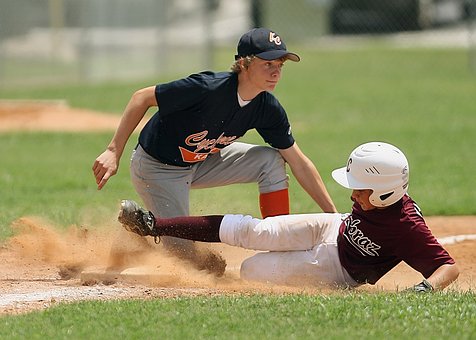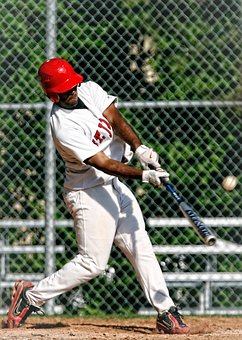Most things are easier said than done. Hitting a home run is no different. There are two key aspects when trying to become a Yankee superstar. Firstly, you need to hit the sweet spot - and secondly, you need to hit it hard. Hitting the right spot is achieved by the movements I’m going to outline below. The great thing is, good technique will inadvertently make you hit the ball harder as well. By following these instructions, you won’t waste energy, and your entire swing will focus your power on the bat.
Get Comfortable
Identify if you feel more comfortable with a narrow or wide stance when getting into position. Your knees should be inside your feet and you should be looking at the pitcher (who is about to get a shock when you smash his ball out the park). Your feet and body should be facing away from the pitcher at a perpendicular angle, with your head turned facing the pitcher.
Negative Mode
Next, we go into the Negative Move. As the ball approaches and you begin your swing, load your weight onto the back foot (remembering to keep the knees inside the feet). The bat should be slightly behind but parallel with the shoulder. As the ball approaches, you want to dip into negative mode before shifting your weight forward.
Spin the Back Toe
Now we shift our weight onto the toe of the foot. As the ball approaches get onto the toe of your front foot releasing the weight from your back foot. Your weight should be shifting from back to front. As your front heel goes down your back knee should start to turn – ending with the laces pointed toward the pitcher. You should be doing this alongside the bat movement.
The batters laces are facing the pitcher.
The Journey Begins
The bat should find itself coming from that starting position (parallel to shoulder), through the body motion, and hitting the ball with the shortest distance traveled from the starting position. All of your energy should be focused on shifting power through this small point. With practice, your feet, torso, and “third arm” will all move in harmony making for a high-intensity swing that pumps all your power into that one little point between your bat and the pitcher's ball.
Following Through
Once the ball is hit, the journey isn’t over. You need to continue to bring the bat around and end with it behind the front shoulder. Following through is key in all sports – from baseball – to soccer – to football. Any motion that requires maximum power (like a free kick in soccer) requires the player to follow through with their foot (or whichever limb). This allows the player to exert all their power through the ball.
Start Slow
All good things take time. Get the technique right before you exert all your force into a shot. Slowly build up using power in your shot so that your body has the correct mechanics and muscle memory. Hitting a home run requires patience both during a game and in training. After some practice, you will master the solid path to the baseball.
Practice Practice Practice
Batting is difficult because it requires your whole body to synchronize and rally its effort through a foreign object – i.e. the baseball bat – which becomes an extension of the body. Ensuring the upper body and lower body works together is key to hitting a home run.
Practice is the key to learning how to shift your weight with the upper body movement while the ball flies toward you. There are three things going on, it’s a lot to take in. As you repeat the motion again and again, your body begins to remember how it should behave without you telling it what to do and your swing becomes second nature. Your knees know to not step outside the feet without you thinking about it and you won’t overshoot your back foot's twist. When you do all these things without thinking, you’re on the money.












